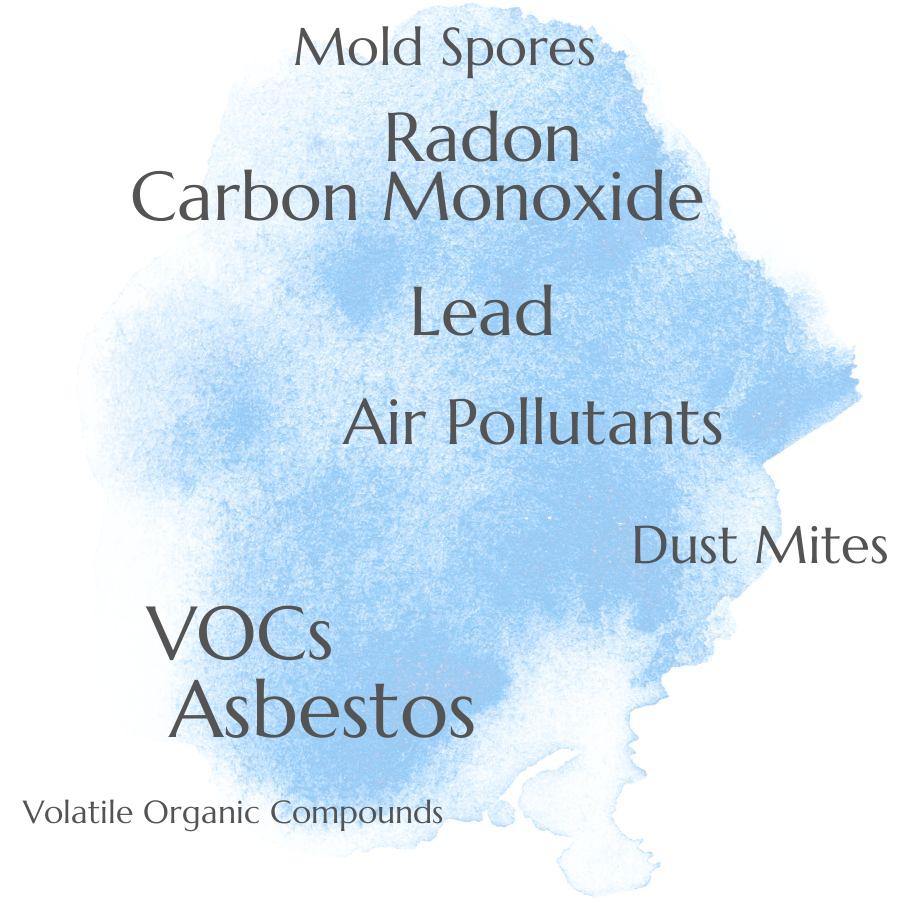Common air pollutants found in homes include carbon monoxide, formaldehyde, volatile organic compounds (VOCs), dust mites, mold, and pet dander.
Air pollution has become a major issue in recent years, and it’s not just outdoors that can be affected. Homes can also contain air pollutants, which can have serious health implications.
In this blog post, we’ll explore some of the most common air pollutants found in homes and what you can do to reduce their presence.
Carbon Monoxide

It is produced when fuels such as natural gas, oil, wood, and coal are burned incompletely. Common sources of carbon monoxide in the home include furnaces and water heaters that are not properly vented or maintained; fireplaces; stoves; and unvented space heaters.
Carbon monoxide poisoning can occur when too much of the gas builds up in an enclosed space. Symptoms of carbon monoxide poisoning include headache, dizziness, nausea, confusion, fatigue and chest pain.
If you suspect you have been exposed to high levels of carbon monoxide it is important to seek medical attention immediately. To reduce your risk for exposure to carbon monoxide it is important to make sure all fuel-burning appliances are properly installed and maintained according to manufacturer’s instructions by a qualified technician.
Additionally it is important to install CO detectors near sleeping areas so they will alert you if dangerous levels of the gas build up in your home.
Volatile Organic Compounds (VOCs)
VOCs are organic compounds that easily become vapors or gases at room temperature, and can be released into the air from everyday products such as paint, cleaning supplies, furniture, carpets and building materials. VOCs can also come from outdoor sources like vehicle exhaust and industrial emissions.
Exposure to high levels of VOCs can cause health problems such as headaches, nausea, dizziness and eye irritation. Long-term exposure may even lead to cancer or other serious illnesses.
To reduce the amount of VOCs in your home, it is important to use low-VOC products when possible and ensure proper ventilation when using any product that contains them.
Radon
It is produced by the breakdown of uranium in soil, rock and water. Radon enters homes through cracks or openings in the foundation or walls, as well as through gaps around pipes and drains.
Inhaling radon over long periods of time can increase an individual’s risk for developing lung cancer. The Environmental Protection Agency (EPA) recommends testing all homes for radon levels to ensure safety from this air pollutant.
Lead
It is a heavy metal that can be released into the air from sources such as paint, plumbing fixtures, and contaminated soil. Lead can also enter the home through dust particles that are brought in from outside.
Once inside, lead can accumulate in the air and on surfaces, where it can be inhaled or ingested by people living in the home. Long-term exposure to lead has been linked to serious health problems including learning disabilities, behavioral issues, and even death.
To reduce exposure to lead indoors, homeowners should test for lead levels regularly and take steps to reduce any contamination found. This may include removing old paint or replacing plumbing fixtures containing lead with newer models made without it.
Asbestos
It is a naturally occurring mineral that was widely used in building materials until the late 1970s, when its health risks became more widely known. Asbestos fibers are microscopic and can easily become airborne, making them dangerous to breathe in.
Inhaling asbestos fibers can cause serious respiratory illnesses such as lung cancer and mesothelioma. Asbestos exposure has also been linked to other diseases such as asbestosis and pleural thickening.
In order to reduce the risk of asbestos exposure, it is important for homeowners to have their home inspected by a professional who specializes in detecting asbestos-containing materials (ACMs). If ACMs are present, they should be removed or sealed off from living areas by an experienced contractor who follows all safety protocols for handling asbestos safely.
Dust Mites
They feed on dead skin cells and other organic matter, such as pet dander, pollen, and mold spores. Dust mites produce waste particles that can become airborne and contribute to air pollution.
These particles contain proteins which can cause allergic reactions in some people when inhaled. To reduce the presence of dust mites in your home, it is important to vacuum regularly with a HEPA filter vacuum cleaner and wash bedding frequently using hot water (at least 130°F).
Reducing humidity levels below 50% will help keep dust mite populations low.
Mold Spores
Mold is a type of fungus that grows in damp, dark places and can spread quickly if not addressed. It releases tiny particles into the air called spores, which can cause health problems for people who breathe them in.
These particles are especially dangerous to those with allergies or asthma, as they can trigger an allergic reaction or worsen existing respiratory conditions. Mold spores also have a musty odor that many find unpleasant and difficult to get rid of without proper cleaning and ventilation techniques.